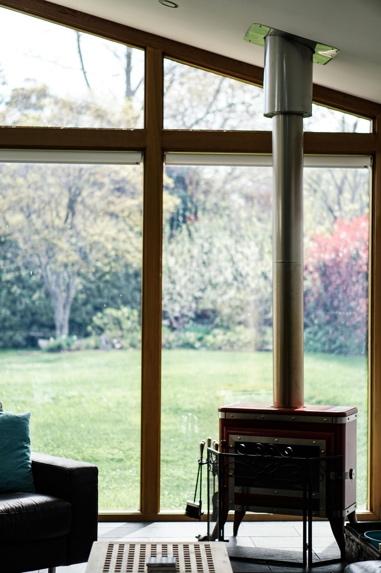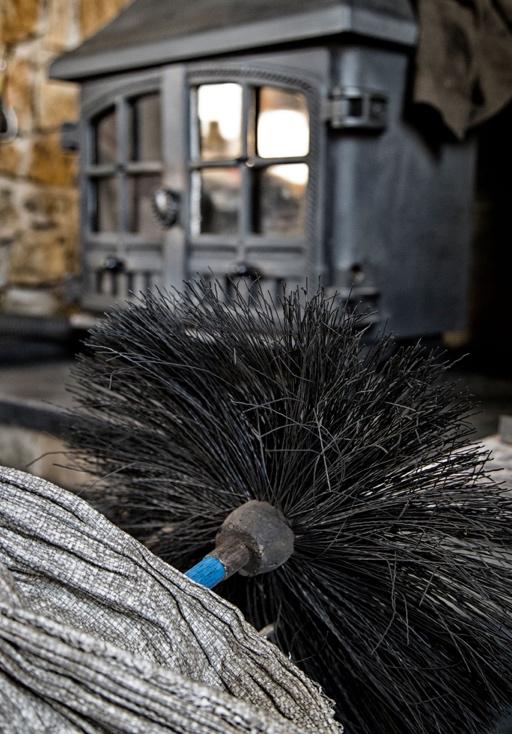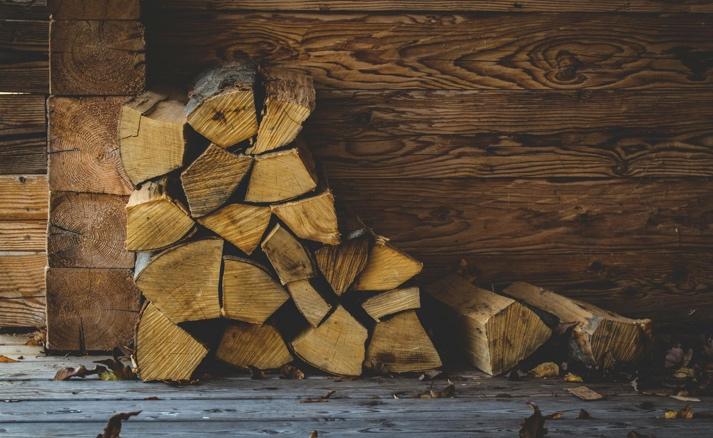The first crisp morning of September brings a familiar anticipation – soon you’ll be lighting your wood burning stove for the first time since spring. But before you load up the firebox and strike that first match, your stove needs some attention to ensure it’s ready for months of reliable, safe operation.
If you’re like most stove owners across Cambridge, Ely, and surrounding areas, your wood burner has been sitting unused since the warmer weather arrived. While this downtime is perfectly normal, it also means your stove system needs specific preparation before the heating season begins.
This isn’t about complex technical maintenance – it’s about practical steps you can take now to ensure your stove performs safely and efficiently all winter long. Some tasks you can handle yourself, while others require professional attention, but all are essential for getting the best from your heating investment.
Why Autumn Maintenance Matters for Stove Owners
Your wood burning stove isn’t just a heating appliance – it’s a complete system that includes the stove itself, the flue connection, and the chimney. After months of non-use, each component needs attention before you restart regular operation.

What happens during the off-season:
- Moisture can accumulate in the flue system
- Debris and nesting materials may have entered the chimney
- Door seals and gaskets can deteriorate
- Glass can develop stubborn deposits that affect visibility
- Internal components may show wear from the previous season
Why autumn preparation is critical: The ideal time for stove preparation is actually at the end of the burning season – typically late spring or early summer. However, if you haven’t managed to get your annual maintenance done yet, now is the time to act quickly. As cooler weather triggers people to think about heating, this becomes the busiest period for chimney professionals, with longer waiting lists and less flexibility for appointments.
The reality of timing: If you’re reading this in September and haven’t had your annual sweep and service, you need to book as soon as possible. Waiting longer means joining longer queues and potentially facing delays when you actually need your heating.
Properties throughout Newmarket, Royston, and Saffron Walden benefit from this proactive approach, particularly older homes where stove systems may require more attention after the summer break.
Your Pre-Season Stove Inspection Checklist
Before diving into maintenance tasks, a systematic inspection helps identify what needs attention. This visual check takes about 15 minutes but can prevent problems throughout the heating season.
External stove inspection:
- Check for any rust, damage, or loose components
- Examine the stove pipe connections for security
- Look for any obvious gaps or damage to seals
- Inspect the hearth area for cracks or damage
Door and glass check:
- Open and close the door to ensure smooth operation
- Check door handle and latch mechanism
- Examine glass for cracks or excessive clouding
- Test door seal by closing on a piece of paper – it should grip firmly
Internal inspection (stove cold):
- Remove any summer debris from the firebox
- Check firebricks for cracks or displacement
- Examine the baffle plate (if accessible) for damage
- Look for any obvious rust or deterioration
Flue and chimney considerations:
- Visual check of accessible flue pipe
- Listen for any unusual sounds that might indicate blockages
- Check external chimney (from ground) for obvious damage
This inspection helps you understand what maintenance tasks you can handle yourself and what requires professional attention.
Maintenance Tasks You Can Handle Yourself
Several important maintenance tasks are well within the capabilities of most homeowners. These don’t require special tools or expertise, just careful attention to detail.
Deep cleaning the firebox: Remove all ash and debris from the previous season (even if you cleaned it in spring, more may have accumulated). Use a vacuum designed for ash removal or let ash cool completely before disposal. Check your local council guidelines for ash disposal – many areas allow cold ash in garden waste.
Glass cleaning: Stove glass cleaner works better than household products. Apply when glass is slightly warm (not hot) for best results. Stubborn deposits may need several applications. Clean glass not only looks better but allows you to monitor the fire properly.
Door seal maintenance: Clean door seals with a damp cloth to remove any debris. Check for obvious damage or compression loss. The paper test mentioned earlier helps assess seal effectiveness – if paper pulls out easily, the seal may need professional replacement.
Ash pan and grate maintenance: Remove, empty, and clean ash pans thoroughly. Check grates for damage or warping. Replace any obviously damaged components before the season starts.
Properties in St Ives, Huntingdon, and St Neots often feature stoves in period settings where regular cleaning helps maintain both function and appearance.
Professional Services: What You Shouldn’t DIY
While many maintenance tasks are suitable for homeowners, some require professional expertise for both safety and effectiveness reasons.

Professional flue sweeping: This is non-negotiable for safe stove operation. Professional chimney sweeping removes creosote, tar, and debris that DIY cleaning cannot address effectively. HETAS guidelines recommend annual sweeping for regularly used stoves, with more frequent cleaning for heavy use.
Stove servicing: Beyond basic cleaning, professional stove servicing includes checking internal components, adjusting door mechanisms, replacing worn seals, and ensuring all safety systems function correctly. This service typically identifies problems before they become serious.
Flue and chimney inspection: Professional inspection, often including CCTV surveys, reveals the true condition of your flue system. This identifies structural issues, blockages, or damage that isn’t visible during basic inspection.
Compliance and certification: Professionals provide certification that your system meets current safety standards. This documentation is important for insurance purposes and demonstrates responsible maintenance.
Problem diagnosis: If your inspection revealed any concerning issues, professional diagnosis ensures problems are correctly identified and appropriately addressed.
The Guild of Master Chimney Sweeps certification ensures professionals understand both traditional and modern stove systems common throughout Cambridgeshire.
Fuel Preparation: Getting Ready for the Season
Proper fuel preparation is as important as stove maintenance for safe, efficient operation throughout the heating season.
Wood seasoning and storage: Well-seasoned wood (less than 20% moisture content) is essential for efficient burning and chimney health. If you’re buying wood now, ensure it’s been properly seasoned. Store wood in a dry, ventilated area away from the stove.

Quality assessment: Properly seasoned wood sounds hollow when knocked together, shows radial cracks at the ends, and feels lighter than green wood. Avoid wood that feels heavy, looks green, or has visible moisture.
Storage considerations: Keep wood dry but allow air circulation. Bring only small amounts indoors at a time to avoid introducing insects or moisture to your living space. Stack wood to allow airflow and keep it elevated from the ground.
Local supply chains: Establish relationships with reliable local suppliers before you need them. Many areas around Bishop’s Stortford and surrounding villages have excellent wood suppliers, but autumn is when demand increases.
Two Paths: Prepared vs Catching Up
Your autumn preparation depends on whether you’ve already had your annual maintenance or you’re catching up now.
Path A: Already Had Annual Maintenance
If you had your chimney swept and stove serviced at the end of last burning season, your autumn preparation is straightforward:
Your September tasks:
- Complete basic inspection checklist
- Handle DIY cleaning tasks (glass, firebox, ash removal)
- Check and organize fuel supplies
- Test first fire when ready
Your advantages:
- No rush to book professional services
- More time to address any minor issues
- Can focus on preparation rather than maintenance
Path B: Annual Maintenance Still Needed
If you haven’t had your annual sweep and service yet, you need to act quickly:
Your immediate priorities:
- Book professional services NOW (waiting lists are building)
- Complete DIY tasks while waiting for appointment
- Prepare fuel supplies
- Don’t use stove until professional work is complete
Your timeline challenges:
- Limited professional availability
- Longer waiting lists
- Potential delays if problems are discovered
- Pressure as heating season approaches
Common Autumn Issues and Solutions
Understanding common problems helps you address them quickly and know when professional help is needed.
Poor draw or smoking issues: Often caused by blockages accumulated over summer. Birds’ nests are particularly common and require professional removal. Don’t attempt to burn out blockages – this creates serious fire risks.
Door seal problems: Seals that have deteriorated over summer affect efficiency and safety. Professional replacement ensures correct materials and fit.
Glass clouding or stubborn deposits: Usually indicates previous burning of inappropriate fuel or poor combustion. Professional cleaning and advice on proper fuel use resolves most issues.
Unusual sounds or smells: These often indicate blockages, structural issues, or moisture problems. Professional inspection identifies the cause and appropriate solutions.
Efficiency problems: If your stove doesn’t seem to heat as well as previously, this might indicate internal wear, flue problems, or fuel quality issues. Professional assessment determines the cause.
Safety Considerations for the New Season
Autumn is the perfect time to review and refresh your stove safety practices, especially if it’s been months since you last used your heating system.
Carbon monoxide protection: Ensure carbon monoxide detectors are working and have fresh batteries. Install detectors in rooms with stoves and in sleeping areas. Test monthly and replace units according to manufacturer guidelines.
Fire safety equipment: Check that appropriate fire extinguishing equipment is accessible and in good condition. Ensure escape routes are clear and everyone in the household knows what to do in an emergency.
Insurance and documentation: Confirm that your insurance covers your stove installation and that you have appropriate documentation. Professional sweeping certificates provide important evidence of proper maintenance.
Safe operation practices: Review safe lighting procedures, appropriate fuel use, and proper ash disposal methods. If you have children or new household members, ensure everyone understands basic safety rules.
FAQs
When should I have my wood burning stove professionally serviced?
Check your stove manufacturer’s recommendations first, as requirements vary. Typically, heavy-use stoves need annual servicing, while average-use stoves may need servicing every 2-3 years. However, annual flue sweeping is recommended regardless of servicing frequency.
Can I burn wood that’s been stored outside all summer?
Only if it’s been properly covered and has adequate moisture protection. Wood should be seasoned to less than 20% moisture content for safe, efficient burning.
What should I do if my stove glass is very cloudy or dirty?
Clean with specialist stove glass cleaner when the glass is slightly warm. Stubborn deposits may indicate previous poor combustion and might need professional attention.
How do I know if my stove door seals need replacing?
The paper test is a good indicator – close the door on a piece of paper and try to pull it out. If it slides out easily, seals may need replacement.
Should I test my stove before I really need it?
Yes, a test fire in early October helps identify any issues while you still have time to address them. Start with a small fire and ensure good ventilation.
What’s the most important maintenance task I shouldn’t skip?
Professional flue sweeping is the most critical task. This removes dangerous deposits and ensures safe operation throughout the season.
Why Choose Ablewight Chimney Services?
Certified Expertise As members of the Guild of Master Chimney Sweeps and HETAS registered professionals, we bring decades of combined experience to every job. Our Trading Standards approval gives you additional confidence in our work quality and business practices.
Comprehensive Service Beyond chimney sweeping, we offer CCTV chimney surveys, bird nest removal, stove servicing, and specialist treatments like Cre-away for heavy tar and creosote deposits. One call handles all your chimney needs.
Local Knowledge Based in Cambridge and covering the 25-mile radius including Ely, Newmarket, Royston, Saffron Walden, St Ives, Huntingdon, St Neots, and Bishop’s Stortford, we understand local housing types and common chimney issues in our area.
Transparent Pricing No hidden costs or surprise charges. We provide clear, upfront pricing and explain any additional work needed before proceeding.
Contact Your Local Chimney Experts
Don’t wait until the first cold snap to discover your stove needs attention. Early autumn maintenance ensures reliable, safe heating all season long.
Get in touch today:
- Phone: 01223 627012
- Email: hello@ablewight.co.uk
Service Areas: Cambridge • Ely • Newmarket • Royston • Saffron Walden • St Ives • Huntingdon • St Neots • Bishop’s Stortford • All surrounding villages within 25 miles
Certifications: Guild of Master Chimney Sweeps • HETAS Registered • Trading Standards Approved
Your wood burning stove has provided comfort and warmth – now it’s time to return the favour with proper autumn preparation. Contact Ablewight Chimney Services today for professional stove servicing and chimney maintenance.


